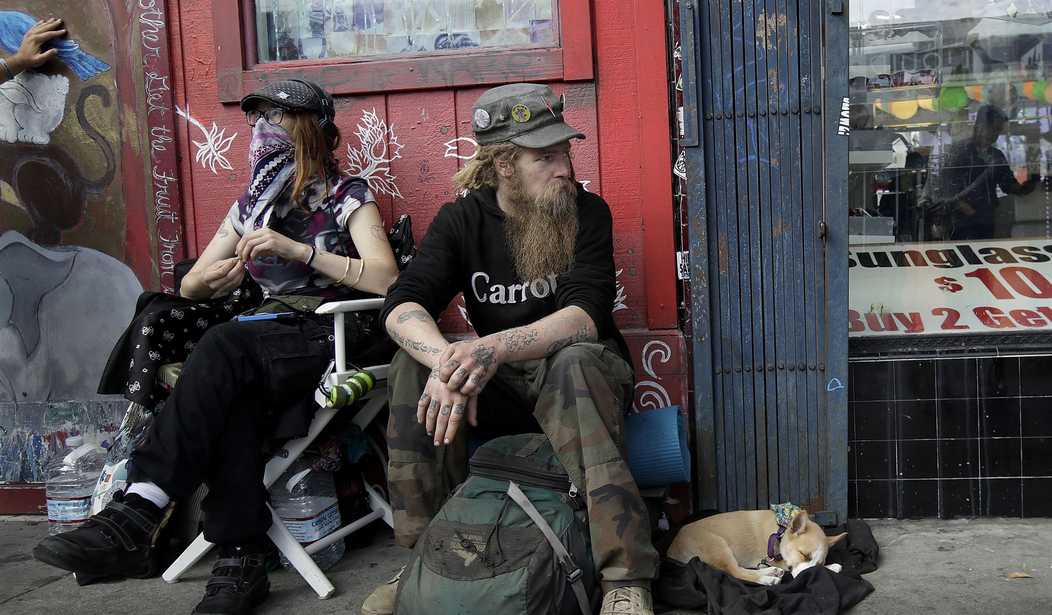We’ve covered the idea of an urban doom loop in places like San Francisco and New York. Today the Washington Post has a story up which argues that it’s actually midsized cities which are in the most danger of falling into a doom loop.
In Indianapolis, the technology giant Salesforce is paring back a quarter of its office space in the tallest building in Indiana, where it has been a key tenant for the past six years. In Atlanta, the private investment giant Starwood Capital defaulted on a $212 million mortgage on a 29-story office tower. And in Baltimore, a landmark building sold for $24 million last month, roughly $42 million less than it fetched in 2015…
Ever since the pandemic drove a boom in remote work, hubs such as New York and San Francisco have drawn attention for their empty offices in previously bustling skyscrapers. But many economists are even more worried about midsize cities that have fewer ways to offset the blow when a major company slashes office space, the sale price of a building craters, or a downtown turns into a ghost town.
In case you’ve forgotten, there are basically three steps to the doom loop:
- Thanks to the pandemic, people get used to working from home and most of them prefer it. This becomes a perk at many companies. Companies also benefit because, after salaries, commercial real estate is their biggest expense. Reduced need for office space means they can save a lot of money by leasing less space.
- The lack of workers downtown has a direct impact on other businesses that were based around the downtown foot traffic. Restaurants, boutiques, drug stores—with less demand some of them close and others struggle to stay open.
- With fewer people downtown and secondary businesses closing up, the city itself takes in a lot less revenue but still has the same amount of physical space it needs to maintain and keep clean and safe. Related city services like subway systems also see a big decline in ridership during the week which makes it more difficult to keep trains running.
It’s called a doom loop because all of these steps potentially feed back on one another. Less revenue for the city could mean things are dirtier or less safe over time or that trains don’t run as often. That becomes another reason for people to avoid the area, which leads to more businesses closing, etc.
No city has completely fallen into this yet (though San Francisco is arguably getting close) but midsize cities are struggling more than big cities in general:
The average delinquency rate across the 50 largest metro areas in the country is about 5 percent. But in places like Charlotte in North Carolina or Hartford in Connecticut, it is almost 30 percent, according to data from the real estate analytics company Trepp.
Likewise, occupancy rates average about 87 percent. But in Oklahoma City, it is just 71 percent, and 76 percent in Memphis and St. Louis.
Of course the market is going to respond to this lack of demand. Rents go down and property valuations drop until they reach a point where they become attractive again. However, resetting the cost structure at a much lower rate doesn’t help cities which still have to provide nearly the same services at the same prices. Police and firefighters won’t be taking a 20% pay cut just because revenue stops coming in to city coffers.
What will eventually happen in a lot of places is what we’ve already seen in San Francisco a few times. Owners will simply walk away from properties and turn them over to the bank. That will leave banks holding a lot of downtown real estate that isn’t worth nearly what it was when they loaned the previous owners the money to buy it. National banks will likely be okay but regional banks could be in big trouble.
You can sort of see how big cities might have a little bit easier time of it. San Francisco, despite its problems, is a beautiful place which attracts tourists from all over the country and around the world. It can fall back on some of that revenue when other sources dry up. But Hartford, Connecticut just doesn’t have the same profile. I’m sure it’s a nice place but there are no travel posters for Hartford in foreign airports.
Some enterprising individuals even tried to profit off the trend by creating a San Francisco doom loop street tour. It was canceled at the last minute.
The Downtown Doom Loop tour charged $30 to show the “doom and squalor of downtown San Francisco,” including its open-air drug markets, vacant office and retail spaces, and “outposts of the non-profit industrial complex.”
The organizer of the tour, who purported to be a city commissioner and the co-founder of a large neighborhood association, hoped to remain anonymous. Which is why, they said, they could no longer hold the event.
In its place someone held a tour of the Tenderloin that was intended to put a positive spin on things. The New York Post reports they got an eyeful anyway.
Some of the homeless men and women laying on the street corners looked up in confusion as the tour group walked past them.
Serena, a group member who brought snacks and water in her bag, stopped to give some of the homeless men and a woman some of her food.
The woman, who was passed out on the ground, was so high on drugs that she couldn’t even lift her head to say thank you.
Another man took a long deep breath out of a pipe and blew smoke into the air.
San Francisco is still the poster child for dysfunction because of the homelessness and crime going on there but it sounds like many midsize cities are in a worse crunch and may be closer to a real doom loop.








Join the conversation as a VIP Member